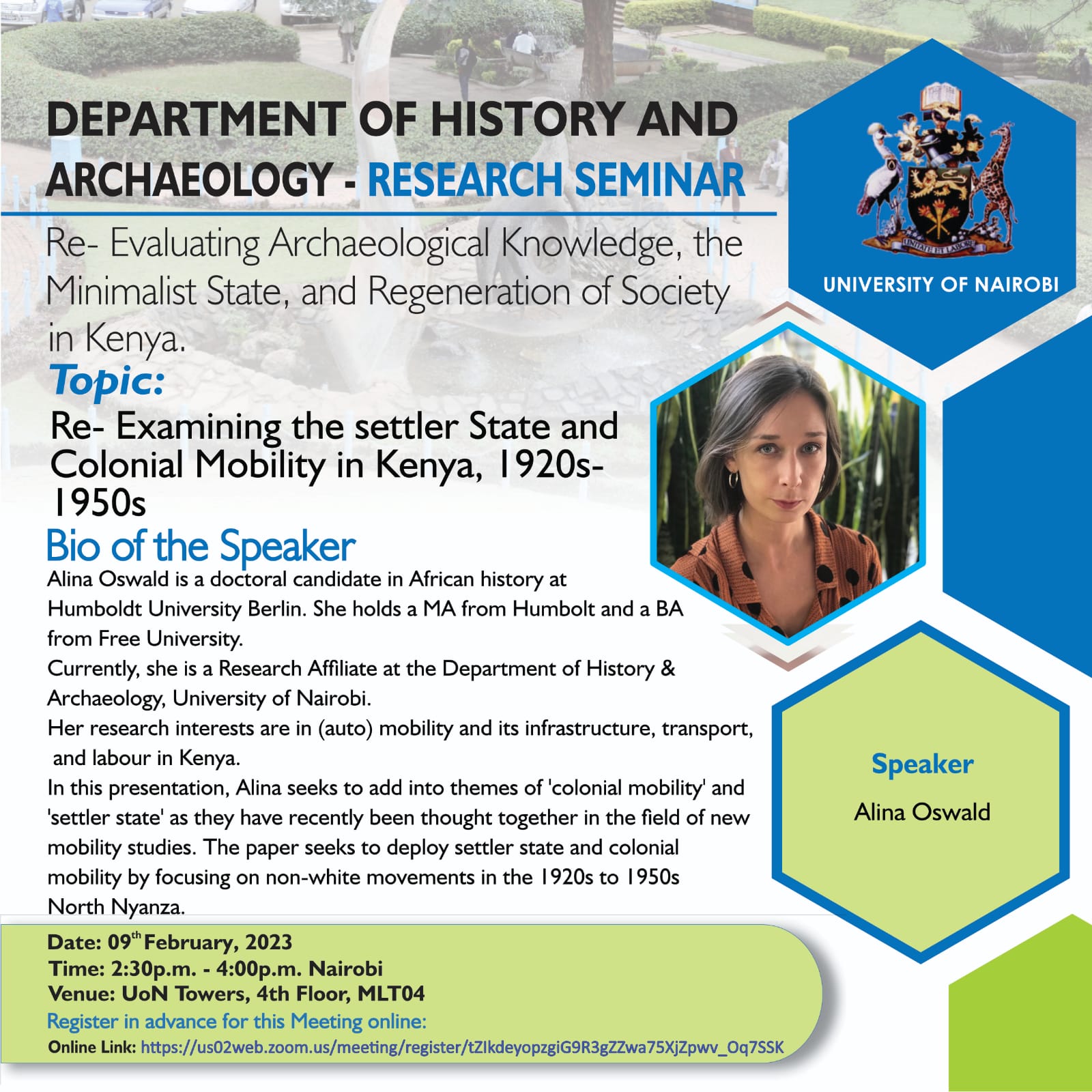On site
UoN Towers, 4th Floor Room MLT04
Online:
Register in advance for this meeting: https://us02web.zoom.us/meeting/register/tZIkdeyopzgiG9R3gZZwa75XjZpwv_Oq7SSK
Re-examining the Settler State
On site
UoN Towers, 4th Floor Room MLT04
Online:
Register in advance for this meeting: https://us02web.zoom.us/meeting/register/tZIkdeyopzgiG9R3gZZwa75XjZpwv_Oq7SSK
Alina Oswald is a doctoral candidate in African history at Humboldt University Berlin (HUB) interested in (auto)mobility and its infrastructure, transport, and labour in Kenya. Alina pursued a MA at HUB and a BA at Free University. As a research affiliate at the University of Nairobi she is currently engaged in writing her doctoral thesis and doing fieldwork. She has presented her preliminary findings at virtual conferences as well as at workshops in Accra and Dar es Salaam.

Through a case study on automobility in Western Kenya, this paper seeks to add to the themes of “colonial mobility” and “settler state” as they have recently been thought together in the field of the new mobility studies (e.g. Carpio, Blu Bard, and Barraclough 2022). This research has led the way by generating insights which address "mobility justice" and possible practices of decolonisation (Sheller 2018, Special Issue Mobilities). The mobility studies draw empirically on settler states like Canada, USA and Australia while European settler colonies in Global South remain absent. In African history, analyses of settler states have been central but the differentiated mobility the states engendered remained under-researched. This paper seeks to deploy settler state and colonial mobility by focussing on non-white movements in 1920s to 1950s Kenya. From the 1920s, African and other racialized groups, often migrants who had arrived in the late 19th century and early 20th century from regions in South Asia, established transport businesses in Kenya. This paper thus asks which structures and processes – including transport licensing, motor vehicles and private houses – enabled and controlled automobility? Which relationships and strategies created space for racialized transporters to operate motor vehicles in the settler state? What new insights can be garnered from the differentiated mobilities of racialized individuals in automobility?
